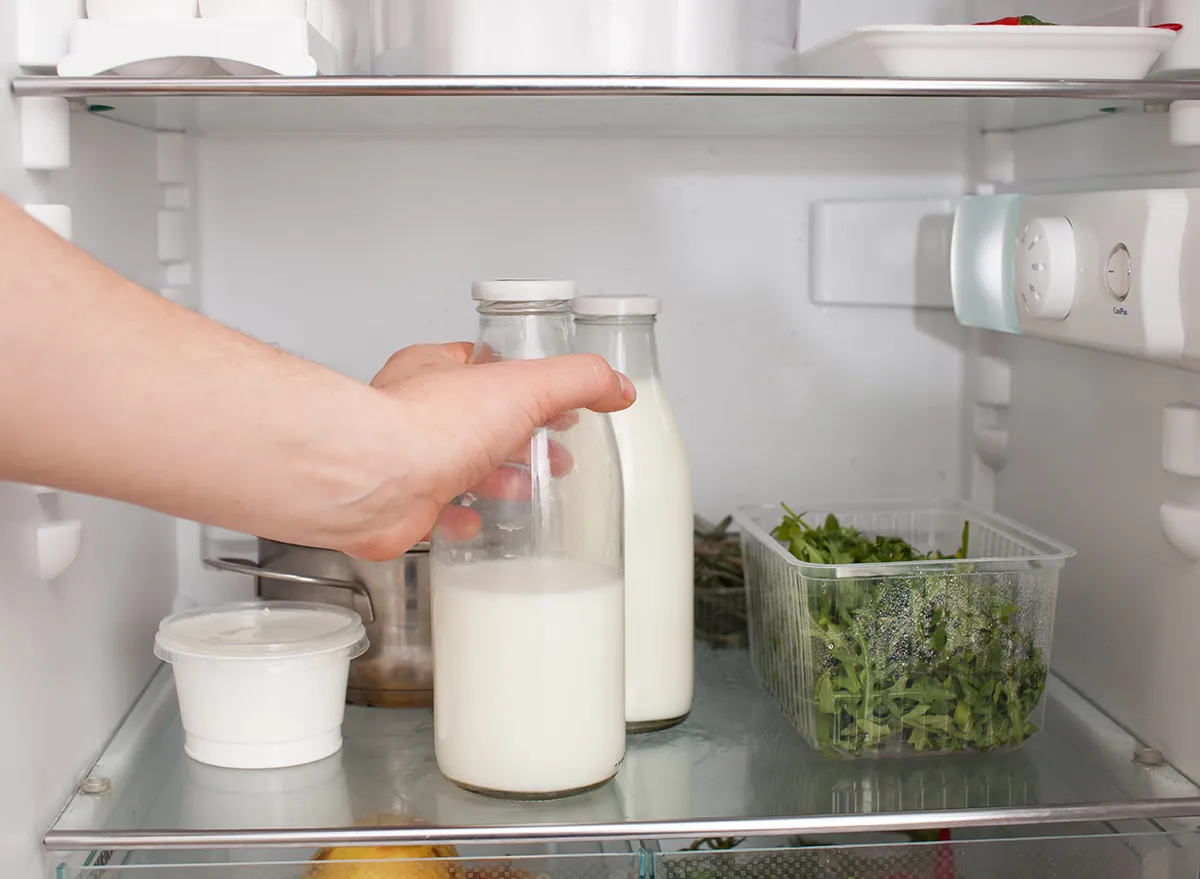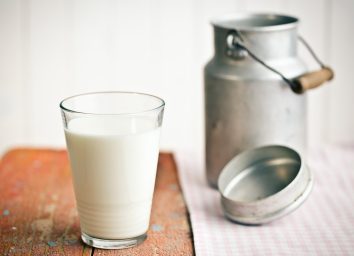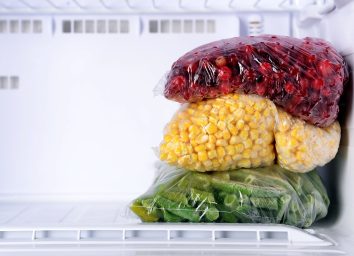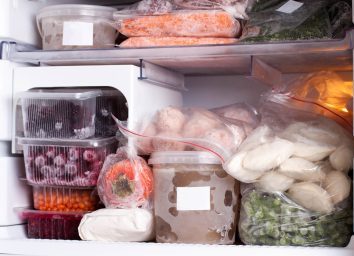The Simple Trick That Keeps Milk Fresher, Longer

With so many milk alternatives out on the market now, cow's milk has faced some competition in the past few years. For those who still enjoy a tall, crisp glass of skim milk with breakfast, it's important you're well-informed on how to store it so that it doesn't spoil as quickly. Unlike milk derived from a nut or oats, cow's milk simply has a much shorter shelf life. But we're here to help you uncover how to keep milk fresh longer with one simple step.
Learn how you can sustain a gallon of milk's freshness for longer with this simple hack from food safety expert Meredith Carothers, the technical information specialist at the USDA's Food Safety and Inspection Service, and Beth Lipton, a recipe developer and wellness writer.
What is the best way to keep milk fresh?
The answer? The trick to keeping milk fresher for longer is mastering the placement of the milk in the refrigerator. Cow's milk should be kept between 32 degrees Fahrenheit and 39.2 degrees Fahrenheit in order to prevent spoilage, so the more the milk is exposed to warm air, the faster it will lose its freshness.
"The coldest parts of your refrigerator will help keep milk from spoiling longer," says Carothers. "The coldest parts of the refrigerator are generally in the back and bottom portions. However, make sure that they are not being placed in too cold of a portion that would cause the milk to freeze!"
No one likes ice chips in their milk, right? That's the last thing you want floating around in a creamy cup of milk, especially when you're dunking chocolate chip cookies in it. With that being said, the colder part of the fridge is not going to harm your milk. In other words, it's safe to freeze milk.
Wait, can you actually freeze milk?
Yes, you most definitely can, and here's why you might. Let's say there was a buy-one-get-one-free sale on a gallon of milk at the grocery store, and you know you're not going to be able to finish that second gallon by the sell-by date. You can freeze that other gallon of milk, but to avoid an explosion in the freezer, you'll want to remove one cup of milk from the container before freezing it. (Milk expands when it freezes.) To thaw the milk, just set the gallon back into the fridge—do not leave it out on the counter—and don't forget to give it a good shake before each use!
Where should you not store milk in the fridge?
There is one place in the fridge where you shouldn't store milk to prevent spoilage.
"A lot of people keep their carton of milk in the refrigerator door, but that's actually the worst place for it because the temperature is warmer there and tends to fluctuate the most," says Lipton. "The best place for it is on the bottom shelf, which is the coldest spot in the fridge."
The back part of the bottom shelf likely retains the coldest temperature throughout the entire fridge because it's away from the refrigerator lights and farthest from the door. Milk that's stored in the door of the fridge gets the most exposure to warmer air, especially when you're physically in the fridge looking for something.
Think about it: when you're digging through the fridge in search of that other half of the red onion you sliced two days ago, that milk is fully removed from the cold air, dangling in room temperature. At least, until you eventually recover the small half-vegetable hidden in the depths of the fridge behind the stacks of containers filled with leftovers, yogurt cups, and maybe even a container of orange juice? It might not seem like much, but having your milk exposed to room temperature for even a short amount of time can have an affect.
How long does cow's milk typically last?
"For best freshness and quality, cow's milk should be used within seven days after opening. Until it is opened, it is best to follow the use-by date," says Carothers. If you're cutting it close to seven days and have suspicions, give the milk a whiff before you drink it—that should tell you whether it's still good to drink.








